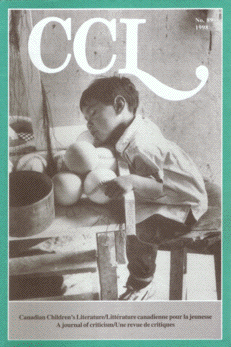The Canadian Romantic Child: Travelling in the Border Country, Exploring the "Edge"
Résumé
Résumé: Dans la littérature pour la jeunesse du Canada anglais, l'enfant est souvent un être partagé entre la nature et le monde de civilisé. M. Steffler étudie cette problématique de la frontière entre civilisation et nature vierge dans quatre romans du XIXe et du début du XXe siècle. Elle examine en particulier les résonances romantiques à la Wordsworth qui transparaissent dans l'établissement du rôle de l'enfant en tant que lien entre l'espace habité urbain ou agricole, et la nature échappant encore à l'emprise des pionniers. Summary: The child in Canadian Literature is often placed as a transitional figure on the edge or border between the wilderness or natural world and civilization or human community. This article explores the vitality and importance of this border country in the actions, attitudes and influences of young characters in four early books for children: Canadian Crusoes: A Tale of the Rice Lake Plains, Two Little Savages, Glengarry Schooldays, and Anne of Green Gables. Examining the Wordsworthian elements of the nineteenth and early twentieth-century Romantic child in Canadian literature, the article emphasizes and traces the development of the central role of the child as the link between farm and wilderness, small settlement and forest, town and nature. The language and concepts of bioregionalism and permaculture are applied to the literary discussion of the border country or "edge."Téléchargements
Publié-e
2007-12-19
Numéro
Rubrique
Articles


